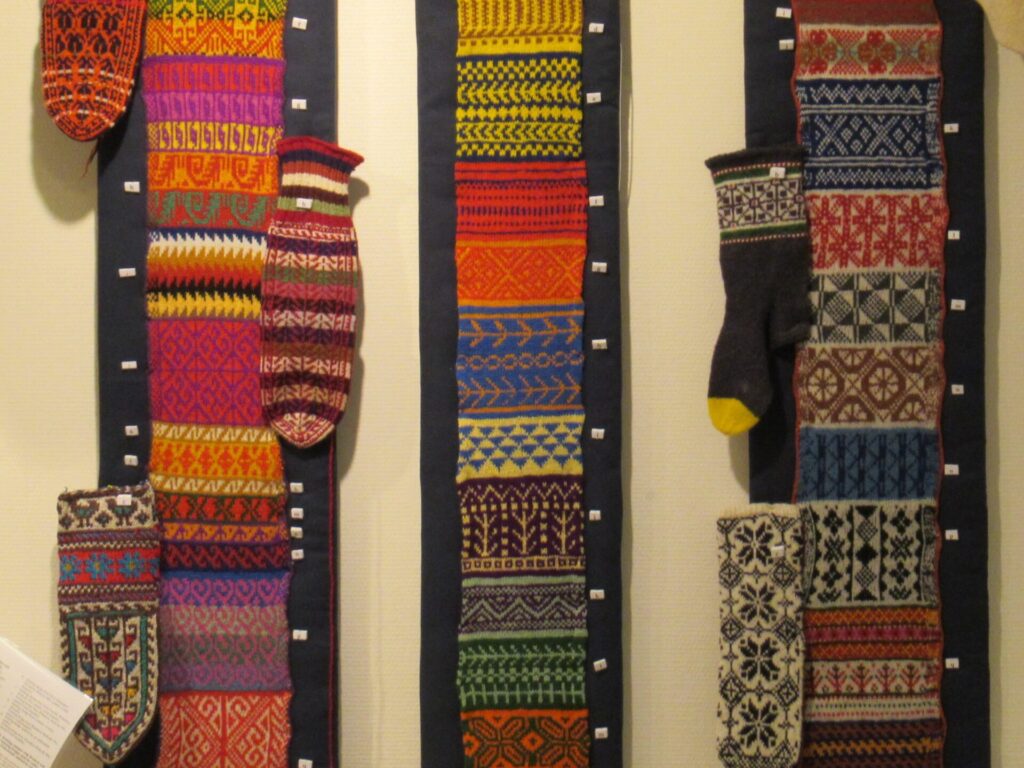
Hello,
Today, I’d like to talk a bit about knitting traditions. I’m not an expert or a researcher, but I am a great lover of traditional knitting techniques and patterns. There are many beautiful and interesting books about traditional knitting, and I’ve built up quite a nice library over the years. These books, as well as various museum collections, have always inspired me tremendously in my own knitting. But lately I’ve been thinking…
It started with a visit to a stunning sock exhibition last November. I was particularly inspired by three samplers with patterns taken from socks from all over the world (photo above), and thought it would be a great idea to borrow from them for all kinds of other projects.
Later, doubts crept in. Can we just borrow freely from other knitting traditions? Anything? From any tradition? When does borrowing become stealing? Or even cultural appropriation? What if a pattern has a special religious or spiritual meaning for the culture we borrow it from of which we may not be aware?
I don’t have the answers. These are just some of the questions that popped into my head.
Well, back to my knitting book library. Sometimes people generously and thoughtfully give me books to add to it. My sister-in-law brought back this lovely booklet from a holiday in the island of Gotland, Sweden, a couple of years ago.
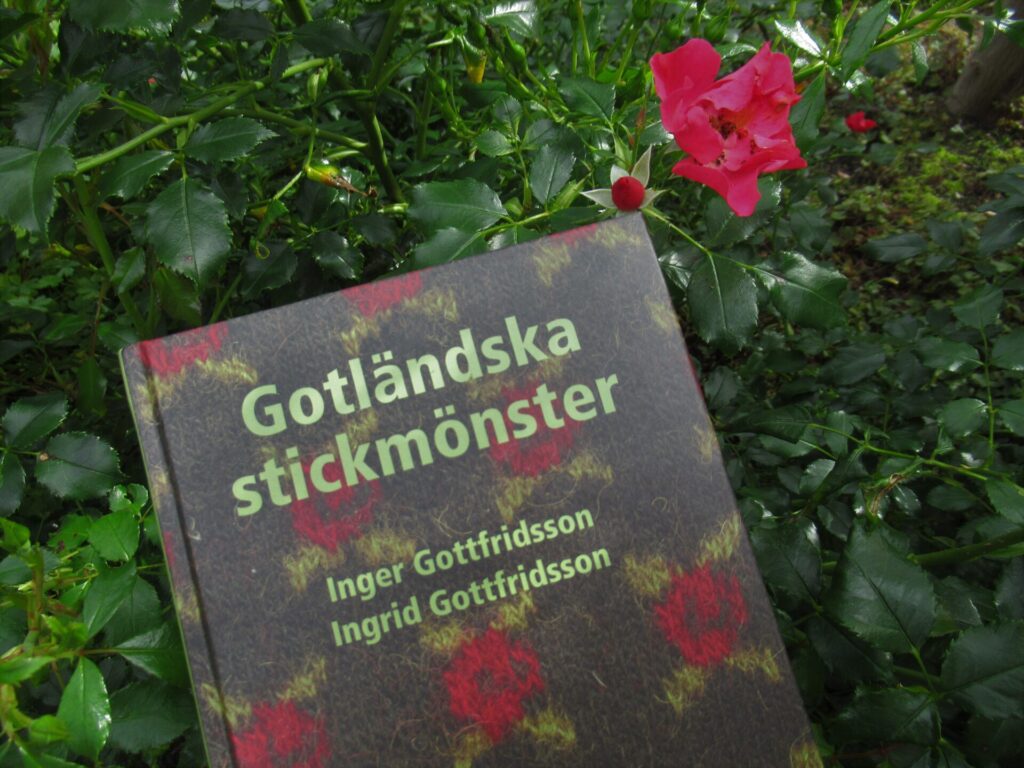
It is filled with patterns for mittens, some with tiny roses, some with blueberries, and many with geometrical motifs.
All of them are beautiful, but are they unique to Gotland? They have a lot in common with Norwegian mittens I’ve seen, and the ones with the roses on the front cover look very much like some Latvian ones.
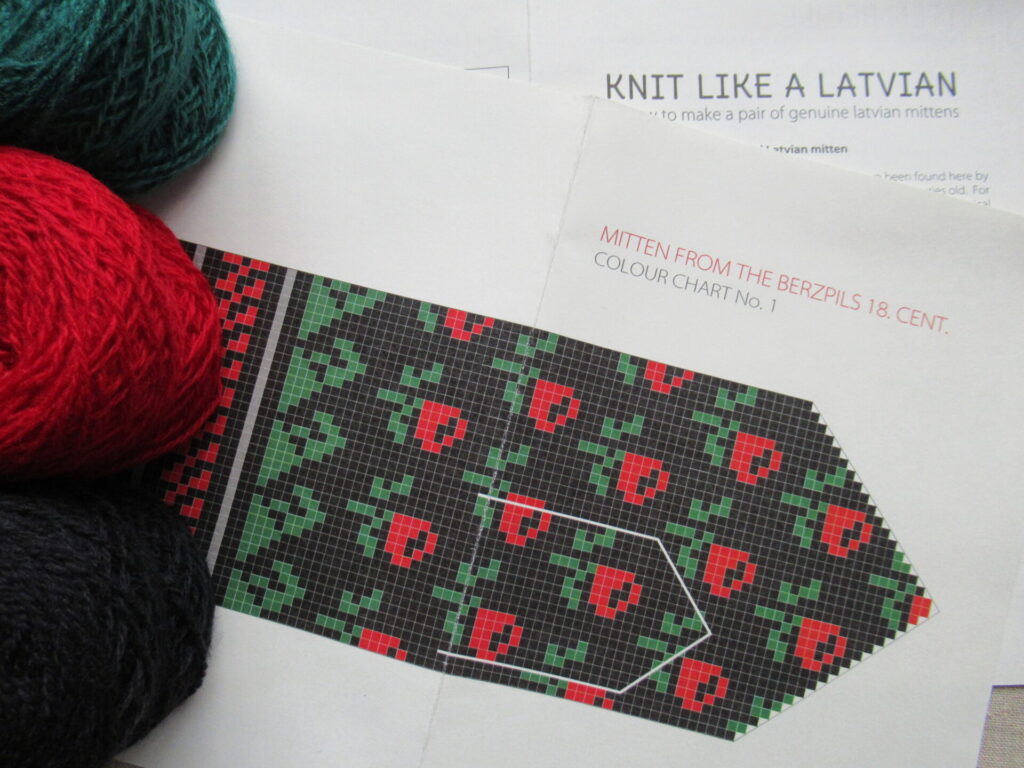
And here is a picture taken during our visit to the knitting museum in Selbu, Norway.
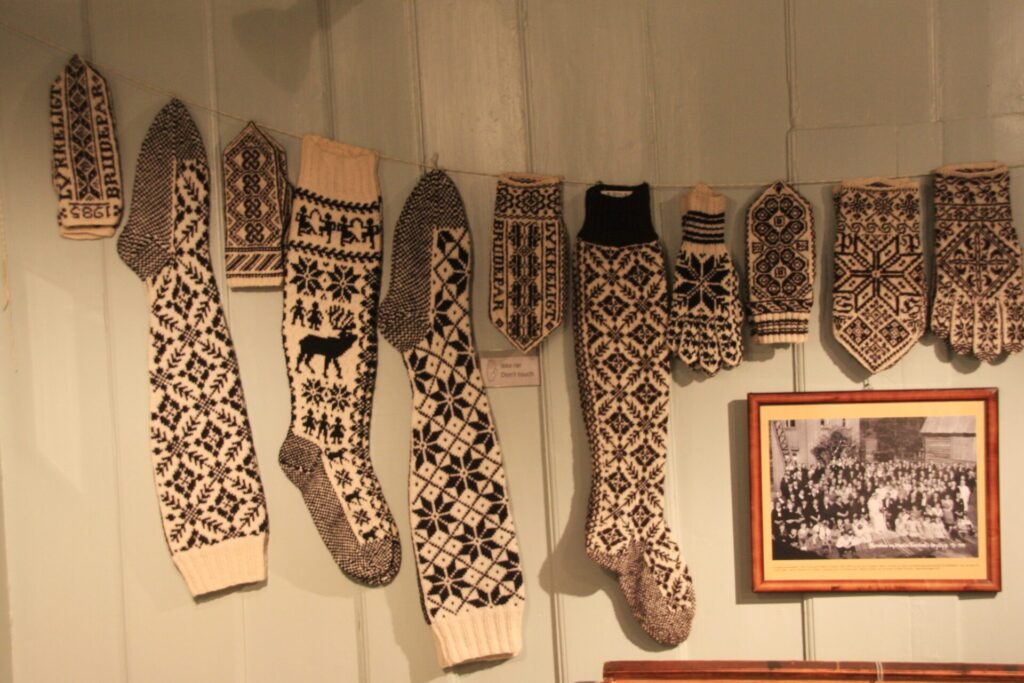
The 8-pointed star, prominent in the 3rd stocking from the left, is also known as Selburose and has been used a lot in that area. Does that mean that it was invented by the people of Selbu and belongs to them? Do they have a sort of copyright?
No, of course it isn’t as black and white as that. The same kind of pattern appears in textiles from many other countries and cultures.
Take, for instance, these hand-knit mittens I bought during a holiday in Shetland. There is a ‘Selburose’ on the back of the hand, but it looks slightly different knit in colour.
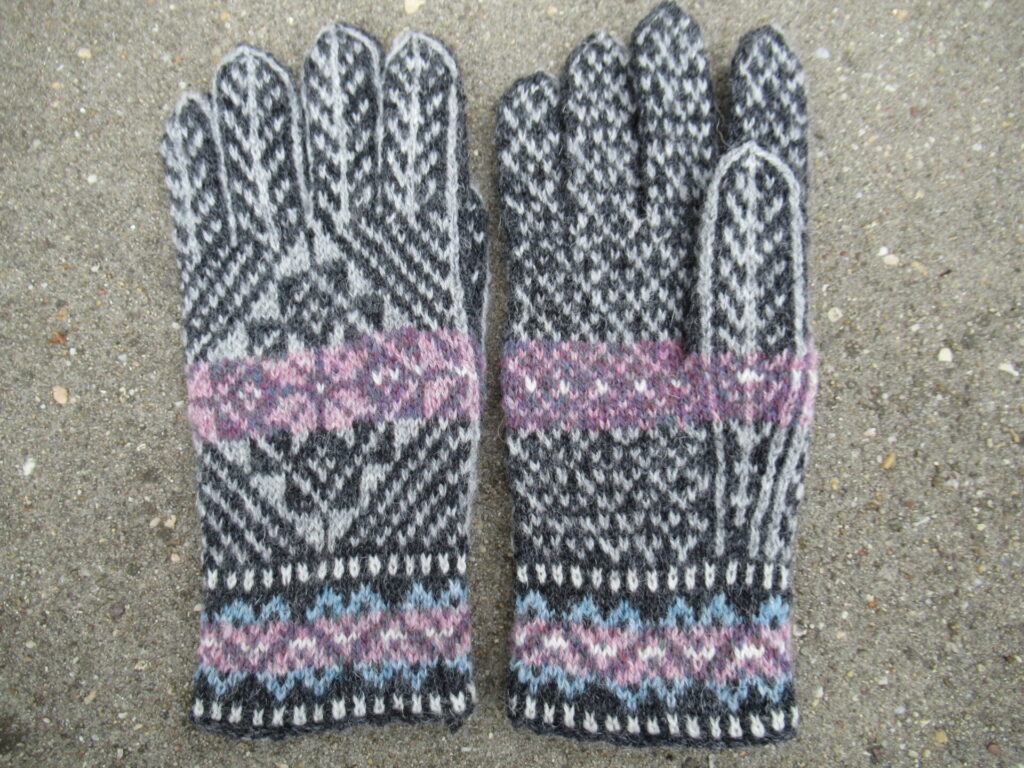
It’s only to be expected that the same kind of patterns and motifs occur in different regions and countries. Some motifs, like the 8-pointed star, flow more or less automatically from the nature of the knit stitch itself. Besides, Shetland isn’t all that far from Norway and there has always been a lot of trading and traffic between them.
Both have great knitting traditions, and there are similarities. But still, Shetland knitting isn’t the same as Norwegian knitting. They both have colourwork, but it’s different. Shetland has a fabulous tradition of lace knitting that Norway doesn’t have. Norway has thick mittens, while Shetland mainly has finer gloves. And Shetland has hap shawls, while Norway doesn’t. Why? Another question I can’t answer. I can only guess that it’s something to do with the materials available and the climate, as well as with local tastes.
Here are 3 of my favourite books about Shetland knitting: Heirloom Knitting (about Shetland lace), Fair Isle Knitting and Shetland Hap Shawls Then & Now.
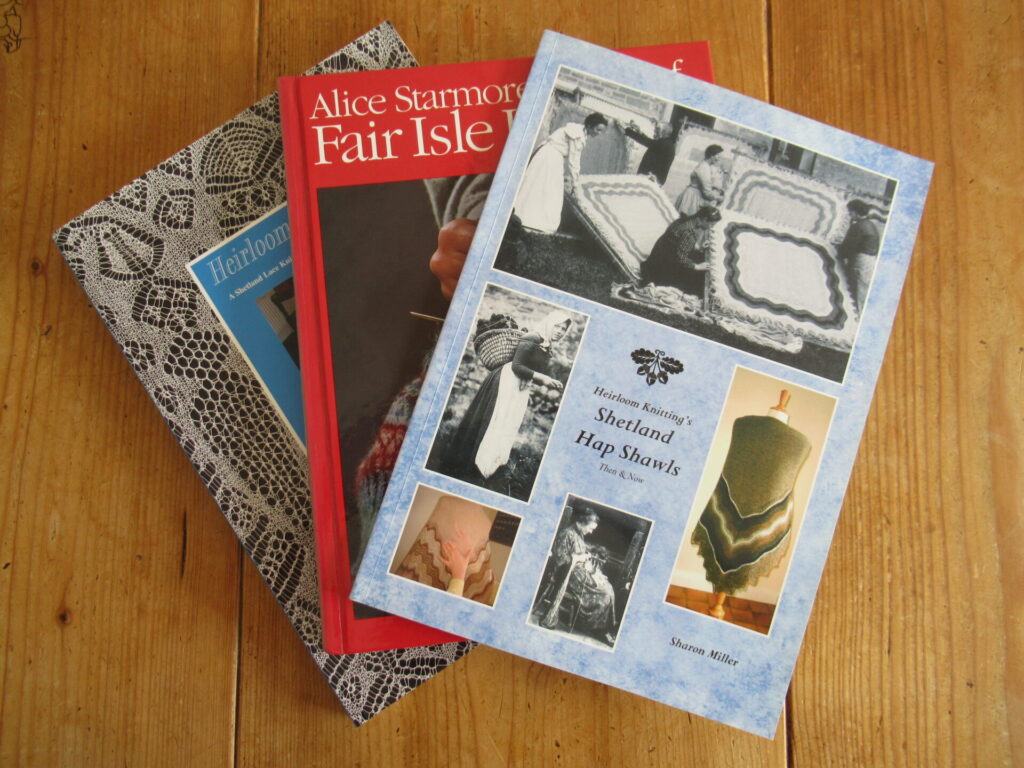
Classics on the subject, but none of them written by authors from Shetland. Fair Isle Knitting was written by Alice Starmore from the Hebrides, and the other two by Sharon Miller from Devon. What do knitters in Shetland think of that?
I once knit a ‘Shetland’ hap shawl. I am placing Shetland between parentheses here, because it isn’t very authentic.
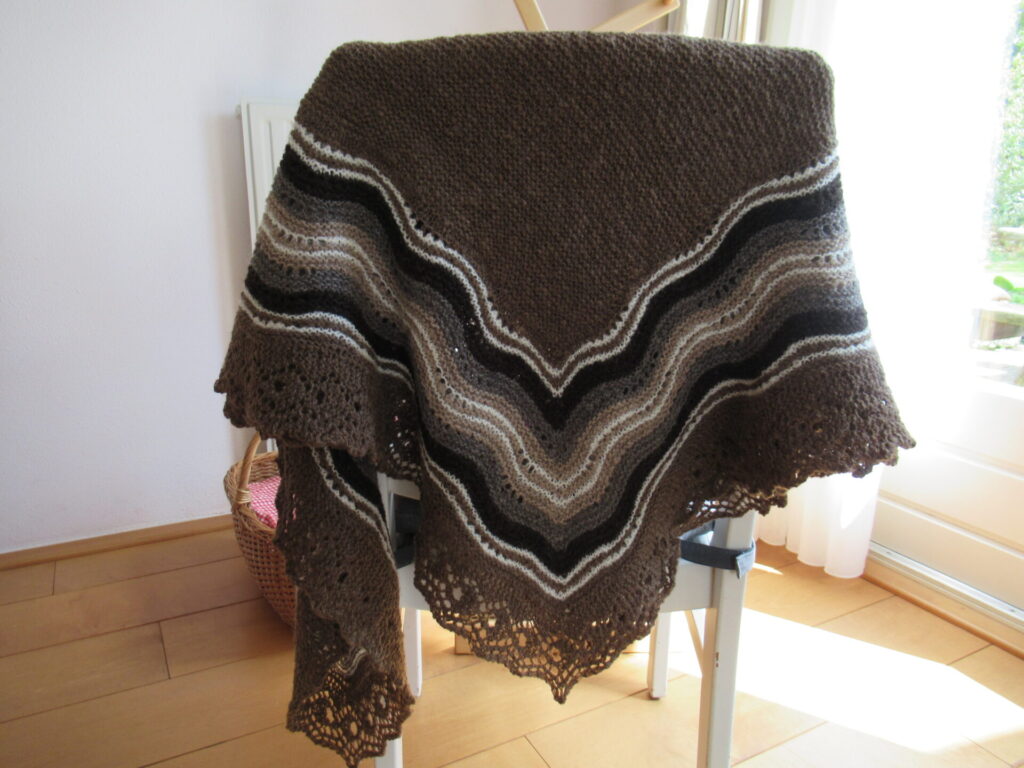
The wool is from genuine Shetland sheep, bought in Shetland. But, for one thing, I am not from Shetland and I spun the yarn at home in the Netherlands. For another, I used a pattern called Quill by American designer Jared Flood. It’s a hodgepodge. Is that okay? Or should we aim for more authenticity? And what exactly is authenticity?
I don’t think I’d be bothered about these questions so much if I lived in a place with a great knitting tradition, like Shetland or one of the Scandinavian countries.
And if I had grown up in a fabulous and colourful knitting tradition as that of Muhu Island in Estonia…
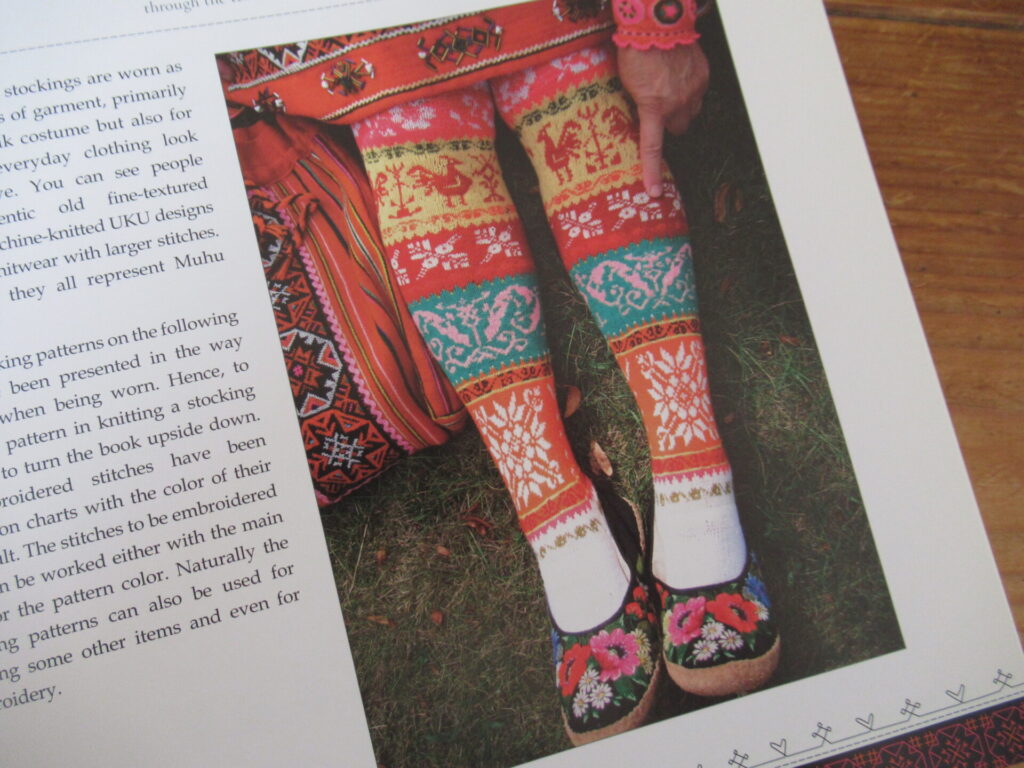
… I think I would be content with that, knitting within my own tradition happily ever after. (Photograph in Designs and Patterns from Muhu Island, by Anu Kabur, Anu Pink and Mai Meriste, p. 45).
But what if you live in a country without such a great knitting tradition? And at that my thoughts turned closer to home. Do we have a knitting tradition at all in the Netherlands? What kind of knitting did I grow up with?
To start with, I remembered a lot of acrylic, in orange, brown, purple and fluorescent green. But thinking about it a little more, I realized that even though our knitting tradition is not as impressive and extensive as that of some other countries, we do have a few things. There’s the Dutch heel for socks, for a start. We also have knitted lace caps for traditional costumes in some areas. And we have traditional ganseys (sharing many elements with English ganseys).
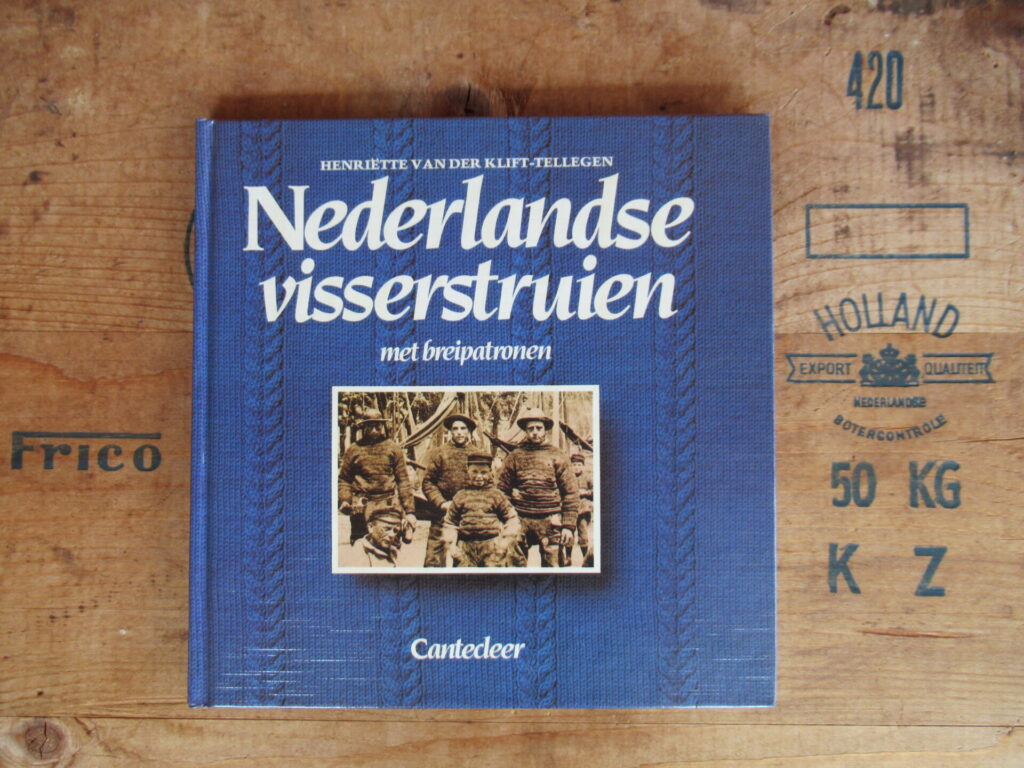
We also have Grolsche wanten – mittens with Norwegian-looking star patterns. Not bad, really. What else do we have? And then I suddenly thought of what I found in my parents’ attic.
To be continued…
Like you, I have a collection of books with patterns for knitting, as well as for sewing, quilting and needlepoint. I also have a love of the textile arts. Having an understanding of a pattern’s historical, cultural or religious significance can enhance our appreciation as well as help avoid unintentional offence.
In the art world, if a piece of art is either a copy or similar in design to a well known artist, it is referred to as ‘in the style of’ or -style, such as Flemish style, which can help avoid confusion. Your Shetland-style shawl is an impressive piece of work.
Thank you for your thoughtful comment – it really helps me in my thinking. Yes, having an understanding of patterns makes all the difference. I feel fairly ‘safe’ about Northern European patterns, but it was patterns from cultures I don’t know anything about at the sock exhibition that raised questions for me. And what a great idea to look at the art world in this context! Calling my shawl a Shetland-style hap feels much better than calling it a Shetland hap. If you ever have any tips for books about a particular subject, please let me know.
What a cliffhanger!
Your thoughts are very interesting. I recently became interested in Bohus knitting which originates not far from our summer house. I joined an FB group and enjoy very much looking at the lovely projects. However, I become impatient with the devoutness of some members. True, copyright and design trademarks must be respected. But as a knitter I hardly ever follow a pattern. I modify, add and subtract freely without even thinking about it. After all, I’m gonna wear the thing and the advantage of making your own garments is that you can make them just as you want them.
My mother-in-law is an avid knitter but just the opposite. She follows patterns and recipes to the detail. Interestingly, she grew up in Norway and was taught to knit at an early age and has knitted loads of traditional sweaters. I grew up without any handicraft models close by and taught myself to knit and sew when I was a teenager.
A Bohus sweater is one of the things on my knitting wish list. So beautiful. The problem there may be that it isn’t a tradition that has evolved over time from various sources, but originally was very much a designer-led ‘brand’. As Wendy remarked in her comment, it might not be a problem not to adhere strictly to a pattern, as long as you call your variation Bohus-style instead of plain Bohus. It surprises me to read that you didn’t have any handicraft models around growing up. I thought everybody in Sweden was taught to knit at an early age, but that seems to be an incorrect stereotype in my mind. You were fortunate to at least have access to the materials as a teenager, so that you could follow your personal interests.
I had no idea that Swedes are perceived as such avid knitters!
My mother revolted against my grandmother’s somewhat joyless attitude to handicrafts. I think that was why she never taught me. Instead she praised everything I made!
Well done, Mum!